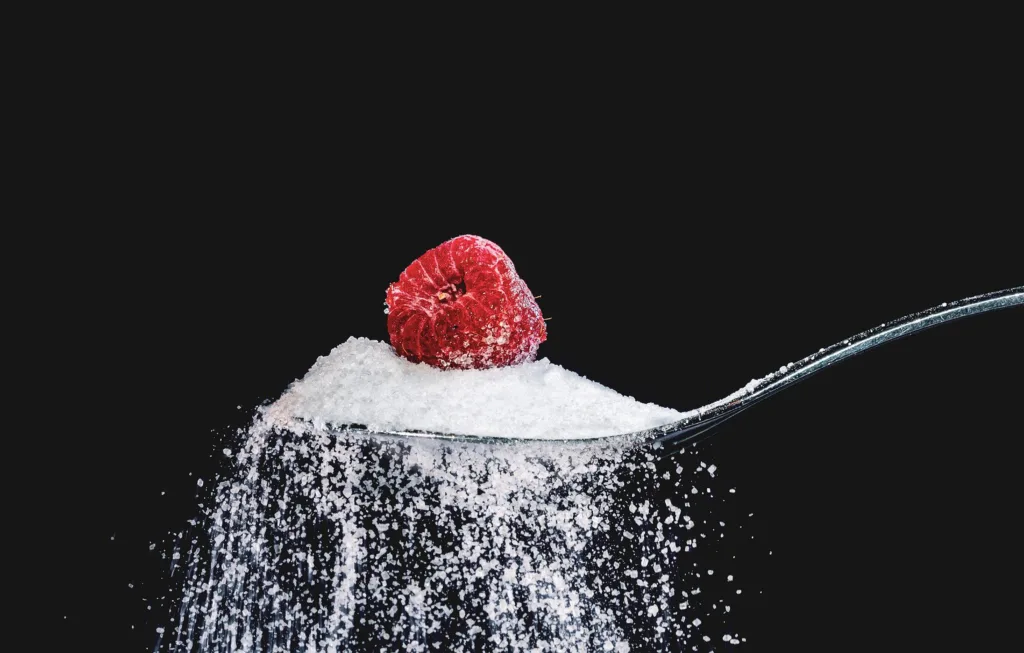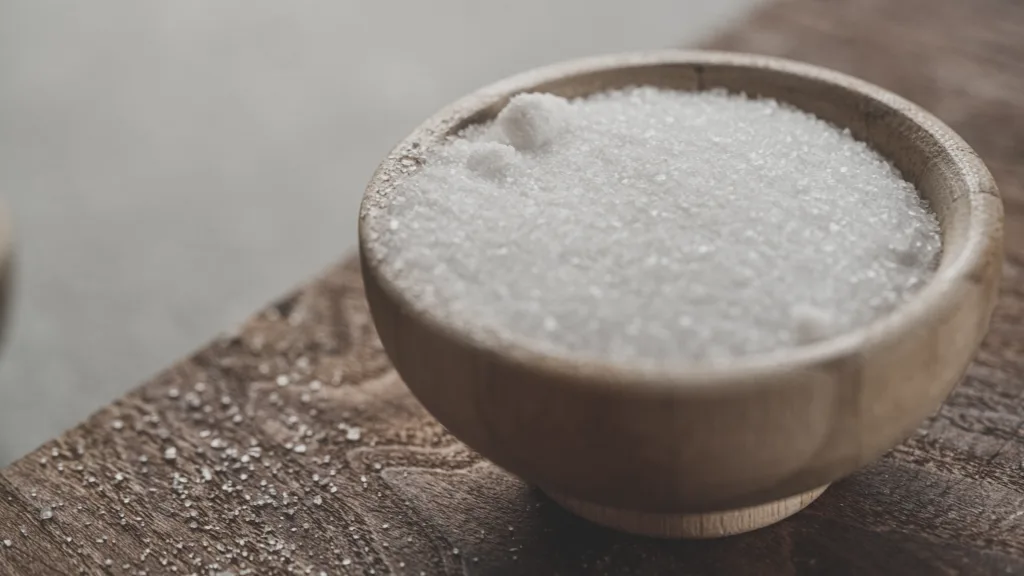Sugar has been used as a preservative for centuries. It is a natural way to prolong the shelf life of food without the need for chemical preservatives. But how does sugar preserve food, and is it really effective?
Sugar works as a preservative by changing the osmotic pressure of the environment. When sugar is added to fresh foods, it creates an osmotic effect. This means that sugar absorbs water in the food, resulting in the reduction of water activity (aw). With less availale water, bacteria and other microorganisms cannot grow and reproduce, thus slowing down the spoiling process.
For example, when you make jam or jelly, you add sugar to the fruit. The sugar absorbs some of the water in the fruit, making it more difficult for bacteria to grow and spoil the fruit. This is why jams and jellies can be stored at room temperature for long periods of time without spoiling.
Sugar has also been used extensively in the preservation of fruits such as apples and pears. When sugar is added to these fruits, it creates a syrup that helps to preserve them. The sugar in the syrup absorbs water from the fruit, making it less hospitable to bacteria and other microorganisms.
In addition, sugar is commonly used to preserve fruit juices and sweetened products such as condensed milk. By reducing the water activity in these products, sugar helps to prevent spoilage and prolong their shelf life.
However, it is important to note that sugar is not a foolproof preservative. While it can slow down the spoiling process, it cannot prevent it entirely. If food is not stored properly, or if it is contaminated with bacteria or other microorganisms, sugar alone may not be enough to prevent spoilage.
Furthermore, consuming too much sugar can have negative health effects, including weight gain, tooth decay, and an increased risk of diabetes and other chronic diseases. Therefore, it is important to consume sugar in moderation and to choose natural sources of sugar, such as fruits, rather than processed foods with added sugars.
Sugar can be an effective natural preservative when used properly. However, it is not a substitute for proper food storage and handling, and should be consumed in moderation for optimal health.
Is Sugar A Preservative Like Salt?
Sugar can be used as a preservative similar to salt. Both salt and sugar work by altering the osmotic pressure of the environment, creating an environment that is less hospitable to bacteria and other microorganisms that can case spoilage. By reducing the availability of water, sugary foods like candies and jams can avoid bacterial growth and spoilage without requiring refrigeration. It’s important to note that while sugar and salt can both be used as preservatives, they may be more effective at preserving different types of foods and may have different effects on flavor and texture. sugar can be a useful tool in preserving certain types of foods and extending their shelf life.

What Food Uses Sugar As A Preservative?
Sugar has been widely used as a preservative in various types of food products. Some of the most common food items that use sugar as a preservative include fruits such as apples, pears, peaches, and berries. These fruits are often preserved by beng soaked in a sugar syrup, which helps to prevent the growth of bacteria and fungi that can cause spoilage.
In addition to fruits, sugar is also used as a preservative in a variety of other food products, including jams, jellies, and marmalades. These products are made by cooking fruit with sugar, which not only helps to preserve the fruit but also gives it a sweet taste.
Sugar is also commonly used in the production of fruit juice, as it helps to prevent the growth of bacteria and other microorganisms that can cause the juice to spoil. Similarly, sugar is often added to dairy products such as condensed milk, to help preserve them and extend their shelf life.
Sugar is a versatile preservative that is used in a wide range of food products, from fruits and juices to jams and dairy products. Its ability to prevent the growth of microorganisms and extend the shelf life of food has made it an essential ingredient in the food industry.
Can Bacteria Grow On Sugar?
Bacteria can grow on sugar. In fact, sugar is one of the most favorable food sources for bacteria, especially glucose, a simple sugar. To grow and divide, bacteria need nutrients such as carbon, nitrogen, and phosphorus, which they obtain from their environment. Glucose provides a source of carbon and energy for bacteria, which they break down through a process called glycolysis to produce ATP, the energy currency of cells. Moreover, some bacteria can metabolize other types of sugars, such as fructose, lactose, sucrose, and maltose, by using specific enzymes that convert them into glucose or other intermediates.
Bacteria that grow on sugar can be found in a wide range of environments, including soil, water, food, and human and animal bodies. Some of them are beneficial to humans, such as the lactic acid bacteria that ferment milk and produce yogurt and cheese, while others are pathogenic and cuse diseases, such as Streptococcus mutans that colonize the teeth and produce acid that erodes the enamel and causes cavities.
Sugar is a primary nutrient for bacterial growth and plays a crucial role in their metabolism and survival. Bacteria can use a variety of sugars as a food source, and their ability to do so depends on their genetic and biochemical characteristics.
Why Does Sugar Preserve Food?
Sugar is a common ingredient used in preserving food. Its ability to preserve food is attributed to its unique osmotic effect. When sugar is added to foods, it creates a hypertonic solution which means that the concentration of sugar in the food is higher than that of the surrounding environment. As a result, sugar absorbs water from the food through a process knwn as osmosis.
This reduction in the water activity in the food creates an environment that is unfavorable for the growth of bacteria, yeast, and molds that cause food spoilage. The low water activity inhibits the growth and reproduction of microorganisms, which in turn slows down the spoilage process.
Moreover, sugar also interferes with the chemical reactions that contribute to food spoilage. It helps to block the chemical reactions that cause browning of fruits and vegetables, enzymatic reactions that cause the breakdown of proteins, and oxidation reactions that cause the rancidity of fats.
In addition to its preservative properties, sugar also enhances the flavor and texture of food. It provides sweetness, contributes to the texture of baked goods, and helps to balance the acidity in some foods.
Sugar preserves food by lowering the water activity in food, inhibiting the growth and reproduction of microorganisms, and interfering with chemical reactions that cause food spoilage.

Conclusion
Sugar can inded be considered a preservative due to its ability to create an osmotic effect in foods, reducing water activity and preventing bacterial growth and spoilage. This is why sugar has been used for centuries in the preservation of fruits, as well as in the production of a variety of sweetened products. By understanding the science behind sugar’s preservative properties, we can appreciate the role it plays in our food system and make informed decisions about its use. So, next time you enjoy a jar of jam or a piece of candy, remember that sugar not only adds sweetness but also helps to keep your food fresh and safe to eat.
